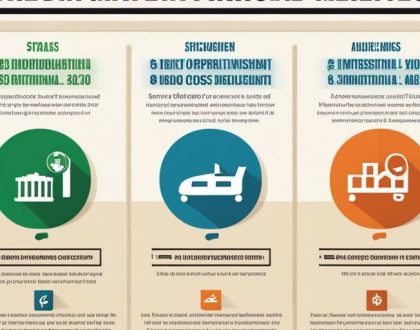Malta’s Initiative to Tackle Noise Pollution

Malta’s Environmental Resources Authority (ERA) is on a mission to combat the rising issue of noise pollution across the islands. In a recent call to tender, ERA is seeking technical experts to conduct a thorough study aiming to propose effective noise abatement measures. This comprehensive study will not only focus on reducing noise pollution but will also delve into the unique challenges presented by high traffic, short routes, a hot climate, and the prevalent habit of leaving windows open.
The Impact of Noise on Health
ERA emphasizes the detrimental effects of noise on human health, making it imperative to improve the overall noise climate. The call to tender highlights potential cost savings on healthcare for residents in areas where proposed interventions will be implemented. By 2030, Malta is committed to reducing the number of people chronically disturbed by transport noise by 30%, necessitating strategic planning and robust noise abatement strategies.
Road Traffic Noise: A Major Challenge
While acknowledging the significance of noise from aviation and industry, ERA underscores the foreseen increase in road traffic as a substantial contributor to future noise levels. Road traffic noise is particularly problematic in urbanized areas, with a 2016 strategic noise mapping exercise revealing that 24% of the population in such agglomerations is exposed to high noise levels from road traffic sources.
Effective Noise Abatement Measures
Noise Barriers
Noise barriers emerge as one of the most effective methods to reduce road traffic noise. ERA suggests that these barriers can enhance residents’ quality of life by minimizing annoyance, distraction, and sleep disturbance. The recently implemented noise barriers along the infrastructure upgrade of the Kappara Junction serve as a promising example.
Noise Diffractors
Another proposed measure is the use of noise diffractors, which scatter sound waves alongside the road, offering a consistent noise-reducing effect throughout their lifespan, estimated to be around 30 years. Combining diffractors with noise barriers could amplify the effectiveness of noise abatement.
Low-Noise Asphalt
The use of low-noise asphalt, with microscopic grooves contributing to noise resonance, is another potential solution. Porous asphalt, initially developed for enhanced skid resistance, has the capacity to reduce high-speed traffic noise. However, challenges include the lack of availability in the local market, necessitating importation and potential supply chain issues.
Challenges in Implementation
ERA points out challenges in implementing alternative road surfaces, including the lack of widespread knowledge and expertise in Malta regarding their proper installation. Moreover, additional traffic calming and management measures are required to prevent excessive wear and tear, akin to the deterioration experienced by traditional asphalt roads.
Acoustic Design for a Better Living Environment
Effective acoustic design plays a pivotal role in creating a better living environment. Measures such as double or triple-glazed apertures, soundproofing, roof and façade insulation, and acoustically treated ventilation contribute to minimizing unnecessary high levels of noise. ERA emphasizes the importance of this design approach in both new residential developments and existing buildings, particularly those located in noise hotspot areas.
Proposed Guidelines for Acoustic Design Interventions
ERA aims to establish guidelines outlining the minimum requirements for effective acoustic design interventions. These guidelines should not only address new residential developments but also provide solutions for existing buildings in noise hotspot areas. The agency stresses that while good acoustic design should be considered during the early stages of development, retrofits and modifications can be introduced in older developments to enhance overall acoustic comfort.
Conclusion
In conclusion, ERA’s initiative to seek technical experts for a comprehensive study on noise abatement measures in Malta underscores the gravity of the issue. As the islands face a future with increased road traffic, finding effective solutions is crucial not only for environmental sustainability but also for the health and well-being of the residents. The proposed measures, ranging from noise barriers to low-noise asphalt, present a multifaceted approach to address this complex challenge.
Frequently Asked Questions (FAQ)
What is the primary goal of ERA’s call to tender for noise abatement measures in Malta?
ERA aims to conduct a study proposing effective noise abatement measures and acoustic design guidelines for both old and new homes, considering the unique challenges presented by Malta’s environment.
Why is road traffic noise a major concern in Malta?
Road traffic noise is a significant environmental problem, particularly in urbanized areas, and is expected to increase in the future. It affects the daily lives of residents, leading to annoyance, distraction, and sleep disturbance.
How effective are noise barriers in reducing road traffic noise?
Noise barriers serve as one of the most effective methods to reduce road traffic noise. They act as obstacles to sound waves, minimizing overall noise levels by up to 10 dB.
What are noise diffractors, and how do they work?
Noise diffractors reduce or redirect sound waves using grooves that scatter the sound alongside the road, providing a consistent noise-reducing effect throughout their lifespan, which is around 30 years.
Can low-noise asphalt reduce traffic noise?
Yes, low-noise asphalt, including porous asphalt, has microscopic grooves contributing to noise resonance. It can reduce high-speed traffic noise by up to 5 dB.
What challenges exist in implementing alternative road surfaces in Malta?
Challenges include the lack of availability of materials in the local market, necessitating importation and potential supply chain issues. Additionally, there is a lack of widespread knowledge and expertise in Malta regarding proper installation.
How does acoustic design contribute to a better living environment?
Acoustic design involves measures such as double or triple-glazed apertures, soundproofing, insulation, and acoustically treated ventilation. These contribute to minimizing unnecessary high levels of noise, creating a comfortable living space.
Why is ERA emphasizing the importance of acoustic design in existing buildings?
While it is crucial to consider good acoustic design during the early stages of development, ERA highlights that existing buildings, especially those in noise hotspot areas, can benefit from retrofits and modifications for improved acoustic comfort.
What is the timeline for Malta to reduce the share of people chronically disturbed by transport noise by 30%?
Malta is committed to achieving this goal by the year 2030.
How can residents benefit from noise abatement measures proposed by ERA?
Residents can experience a better quality of sleep, improved conversations, and even leave windows open for longer periods, contributing to an overall enhanced living environment.
Anna Amstill
I am an avid Blogger and Writer with more than 6 years of experience with Content Writing. An Online Marketing expert specializing in Blog writing, Article writing, Website content, SEO specific Keyword content and much more. Education B.A. - business management, York University, Canada, Graduated 2016.
Recommended Posts

Financial Aspects of Doing Business in Malta
July 26, 2024

The Rise of Digital Banking Solutions in Malta
July 24, 2024




